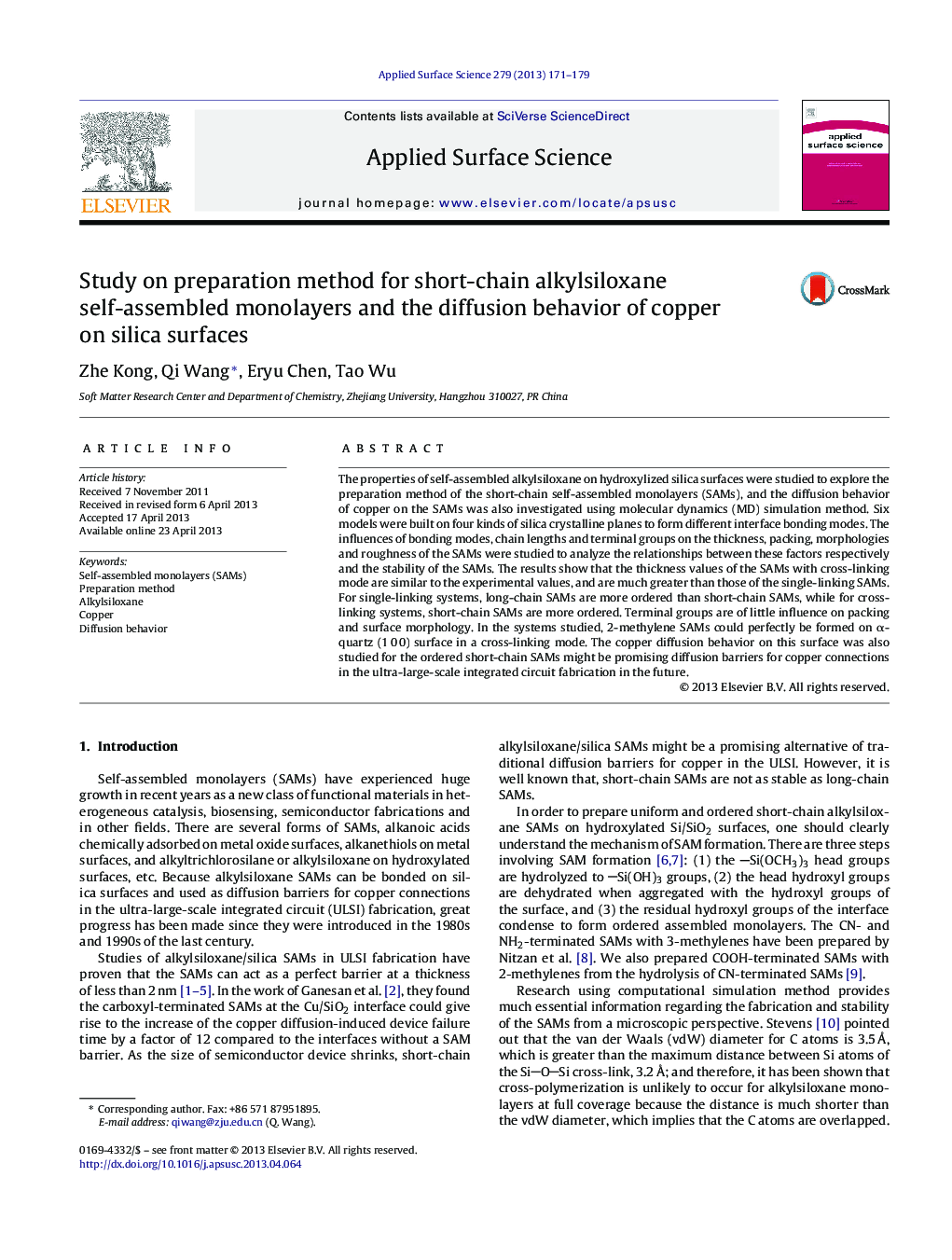| Article ID | Journal | Published Year | Pages | File Type |
|---|---|---|---|---|
| 5354273 | Applied Surface Science | 2013 | 9 Pages |
Abstract
The properties of self-assembled alkylsiloxane on hydroxylized silica surfaces were studied to explore the preparation method of the short-chain self-assembled monolayers (SAMs), and the diffusion behavior of copper on the SAMs was also investigated using molecular dynamics (MD) simulation method. Six models were built on four kinds of silica crystalline planes to form different interface bonding modes. The influences of bonding modes, chain lengths and terminal groups on the thickness, packing, morphologies and roughness of the SAMs were studied to analyze the relationships between these factors respectively and the stability of the SAMs. The results show that the thickness values of the SAMs with cross-linking mode are similar to the experimental values, and are much greater than those of the single-linking SAMs. For single-linking systems, long-chain SAMs are more ordered than short-chain SAMs, while for cross-linking systems, short-chain SAMs are more ordered. Terminal groups are of little influence on packing and surface morphology. In the systems studied, 2-methylene SAMs could perfectly be formed on α-quartz (1 0 0) surface in a cross-linking mode. The copper diffusion behavior on this surface was also studied for the ordered short-chain SAMs might be promising diffusion barriers for copper connections in the ultra-large-scale integrated circuit fabrication in the future.
Related Topics
Physical Sciences and Engineering
Chemistry
Physical and Theoretical Chemistry
Authors
Zhe Kong, Qi Wang, Eryu Chen, Tao Wu,
